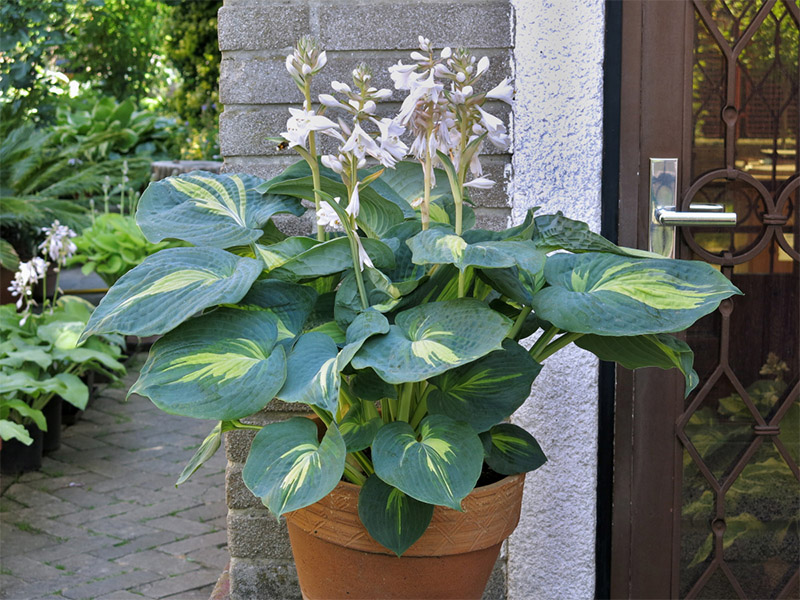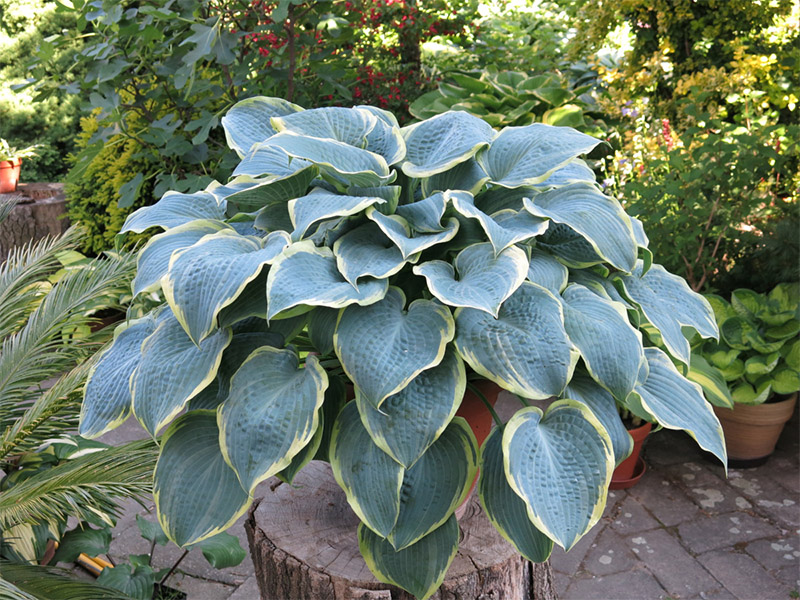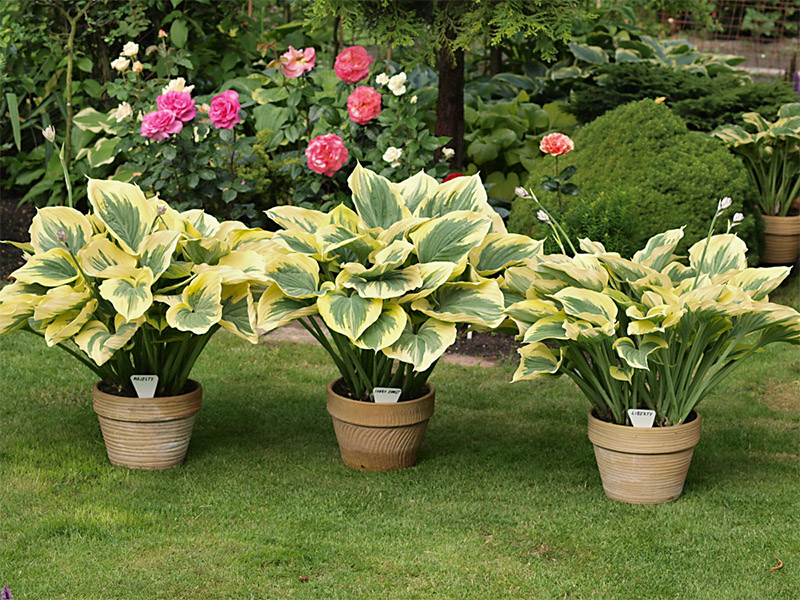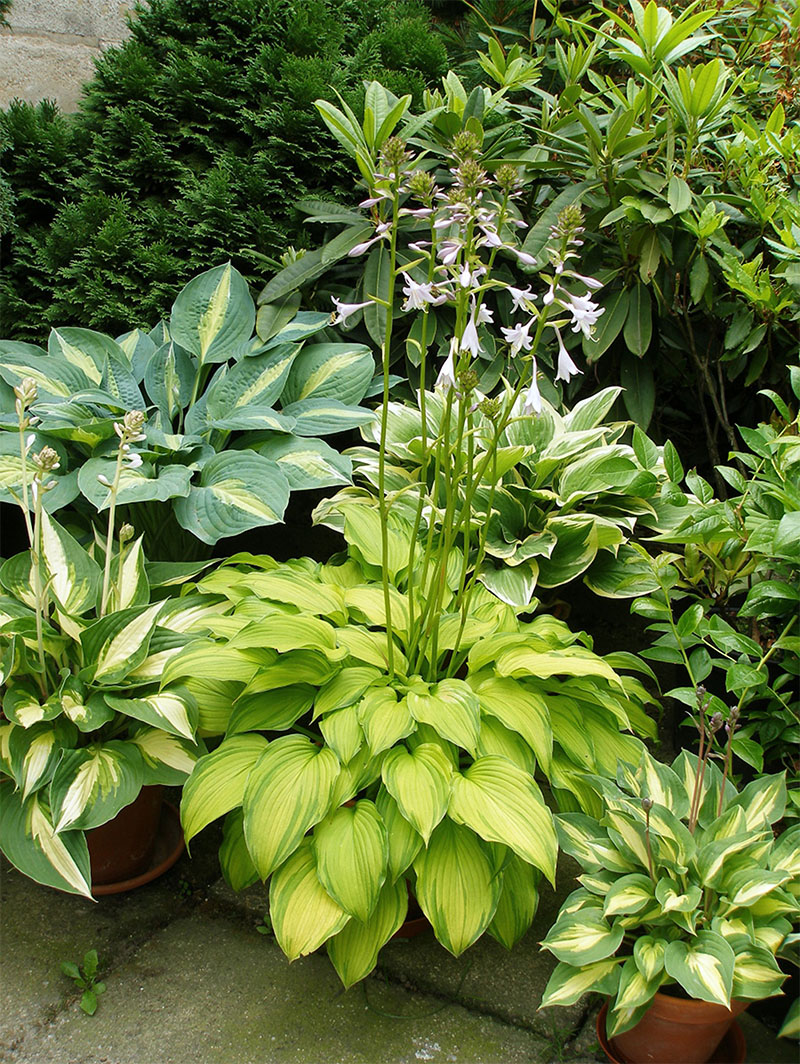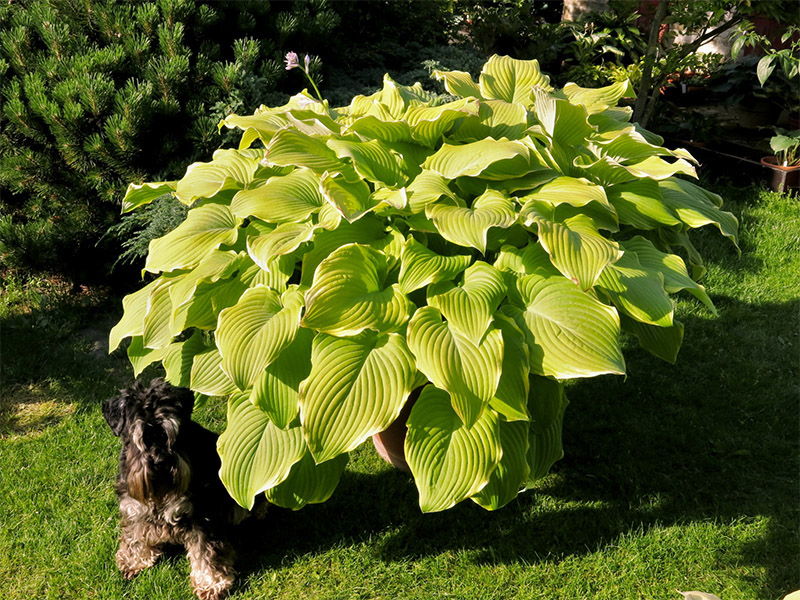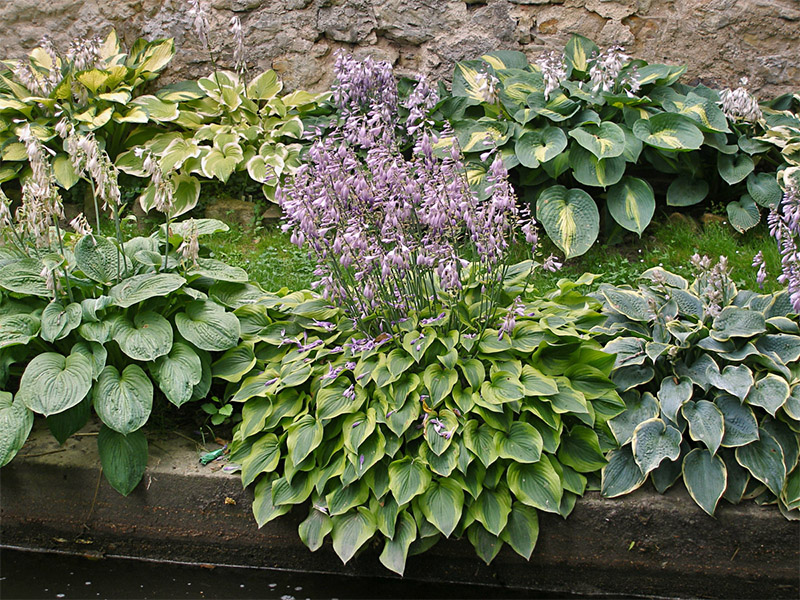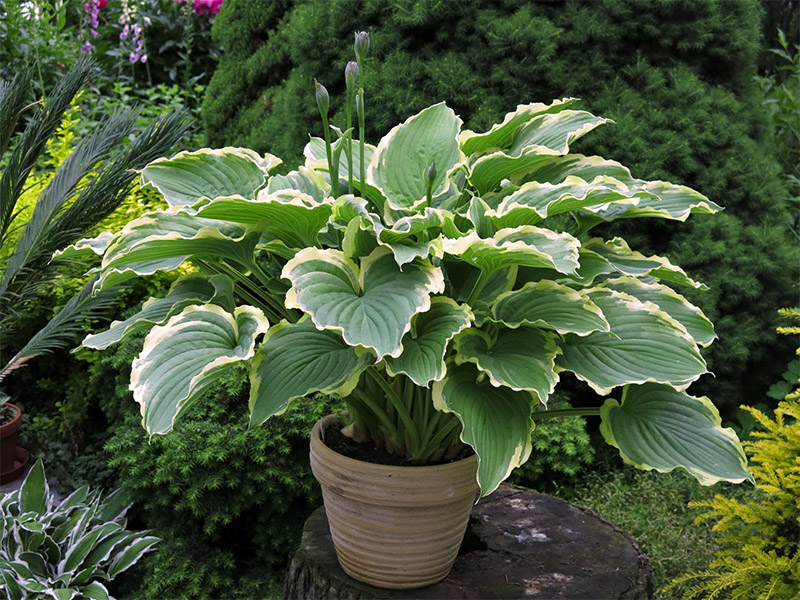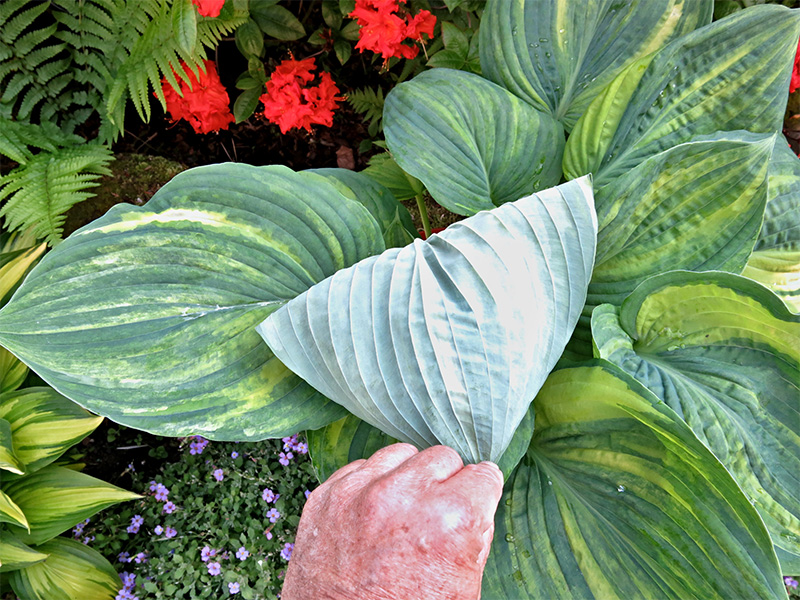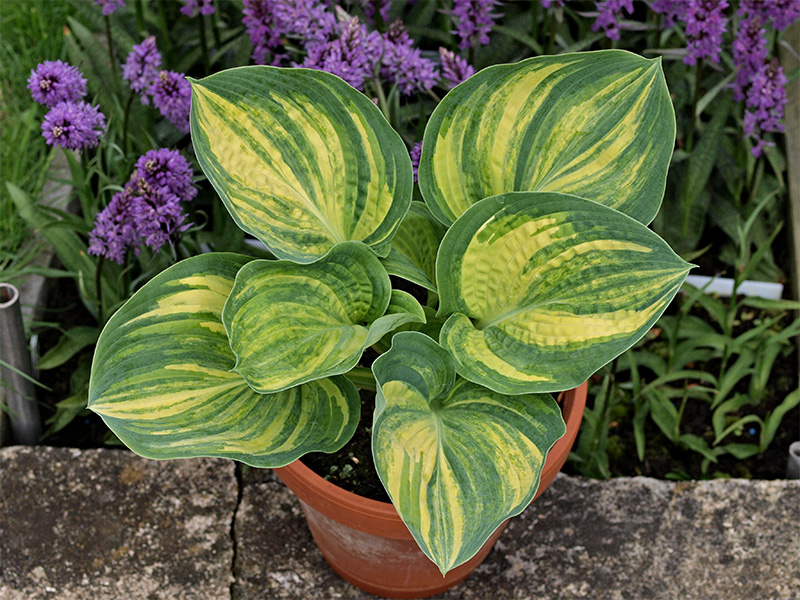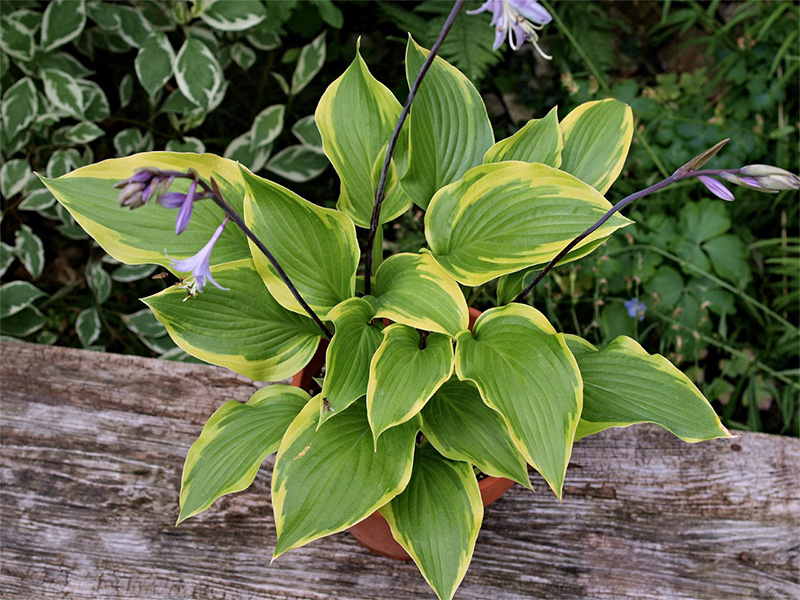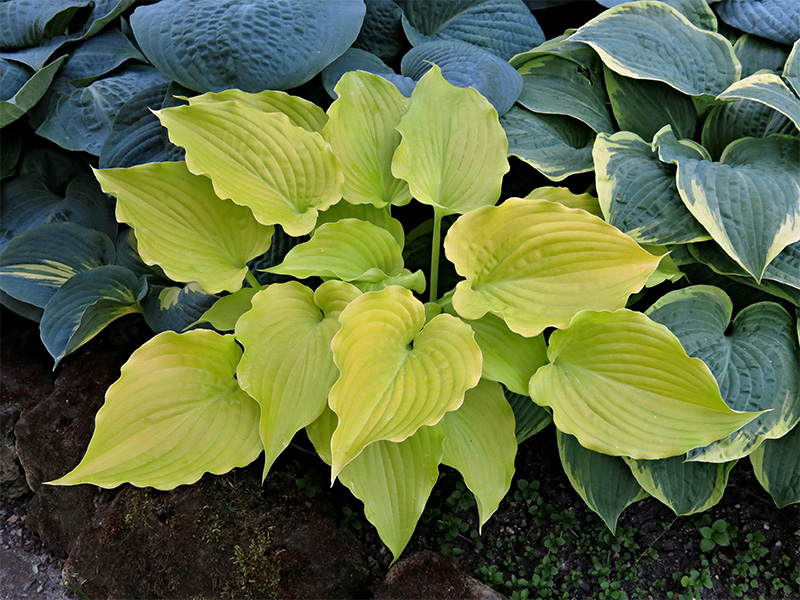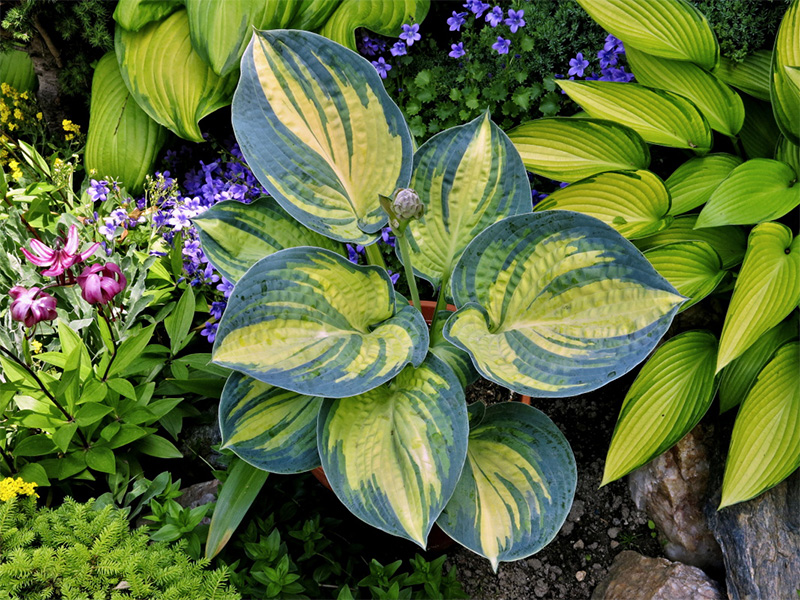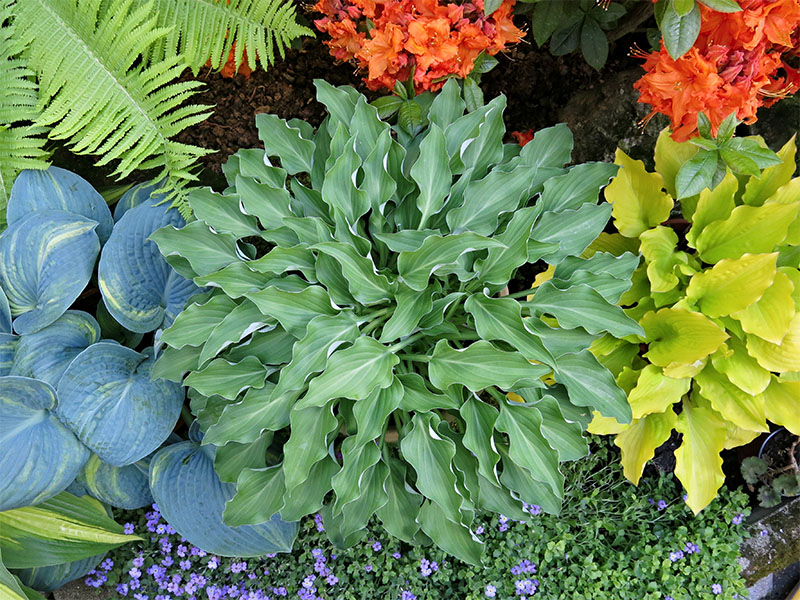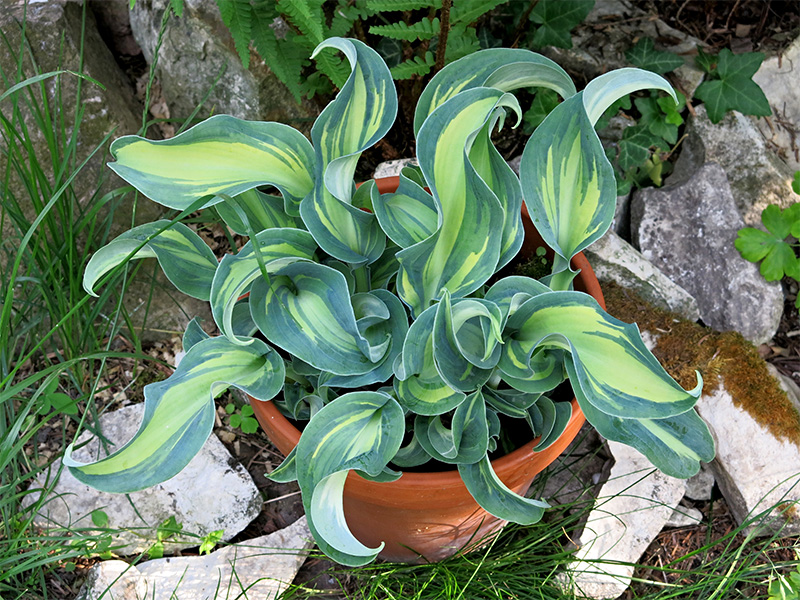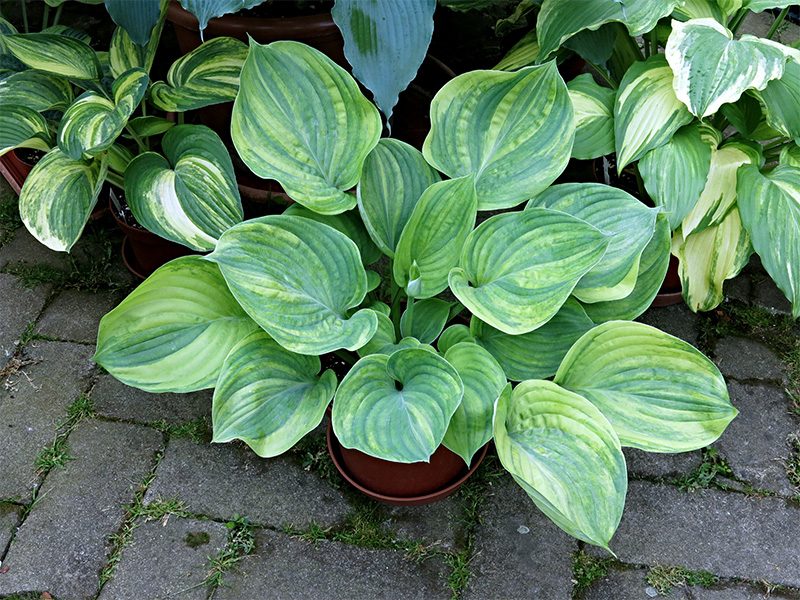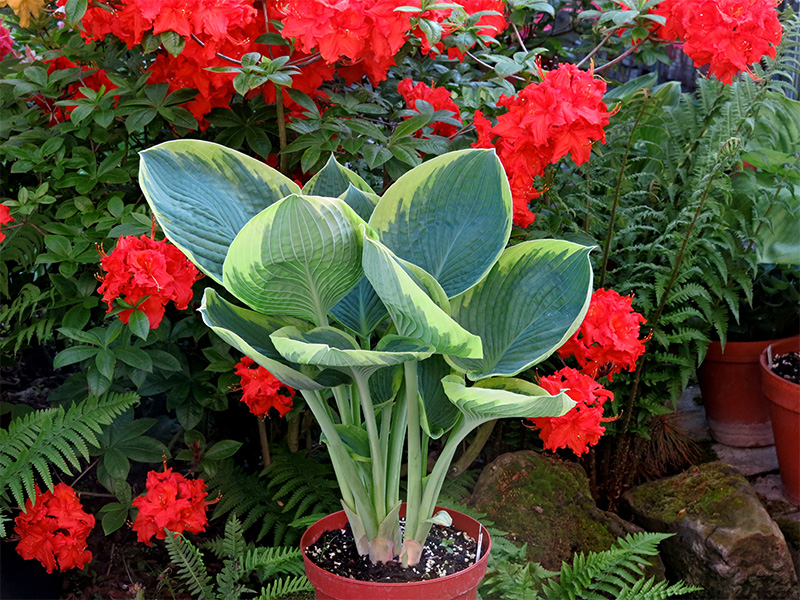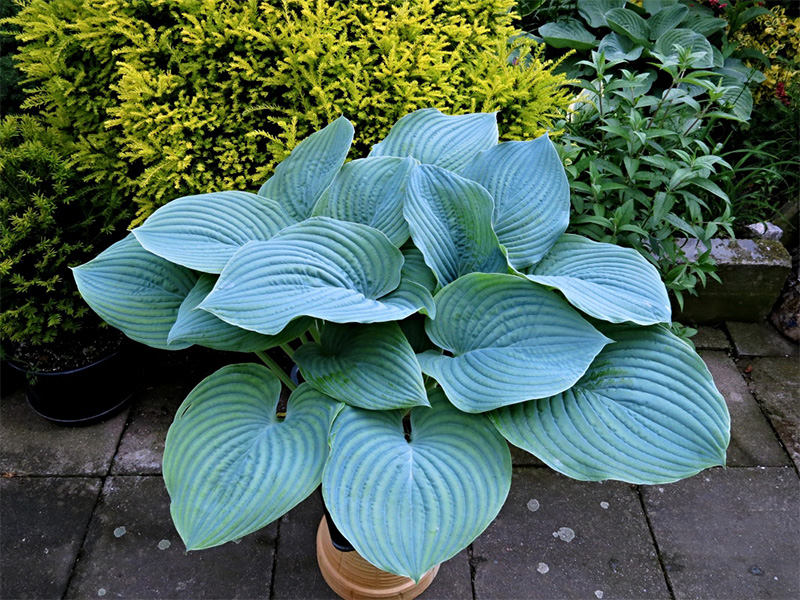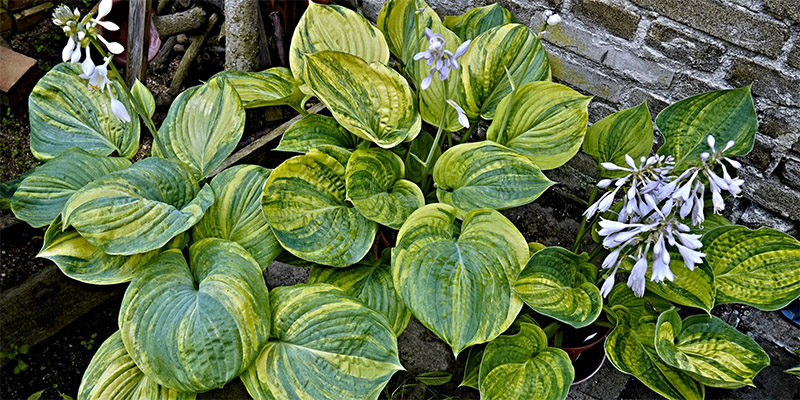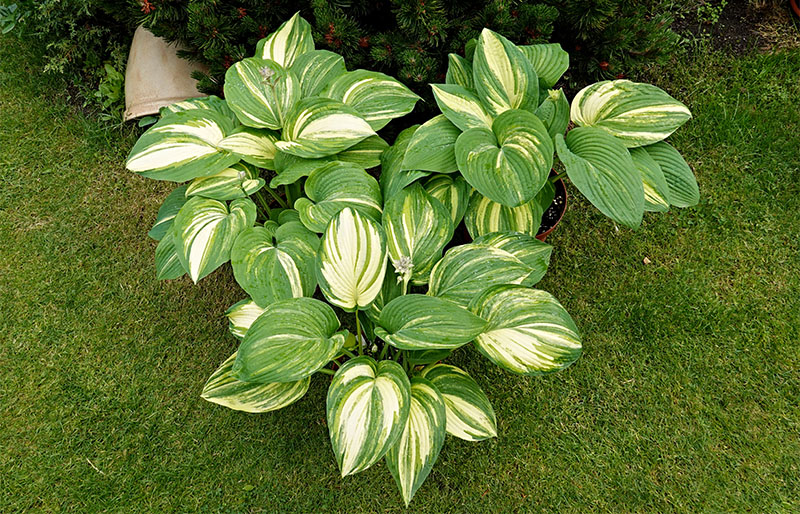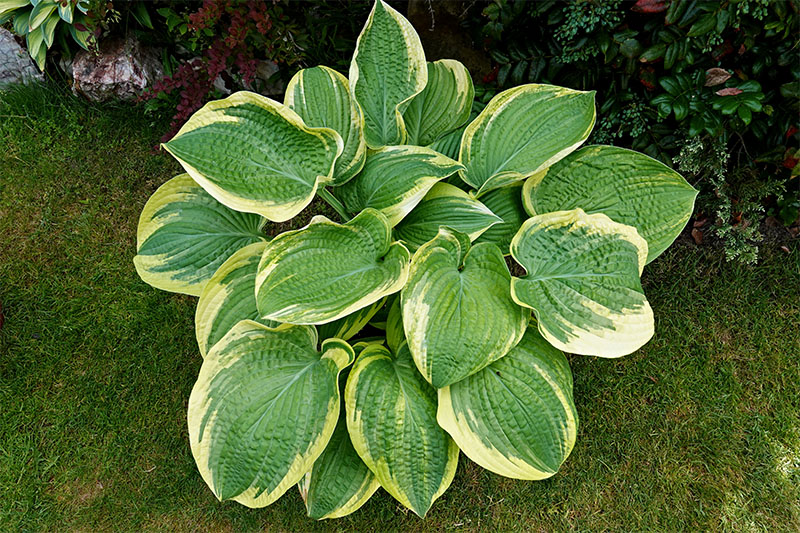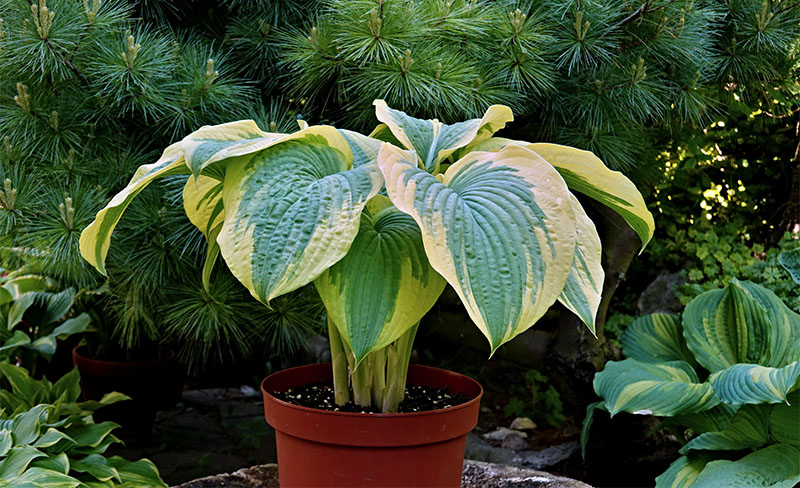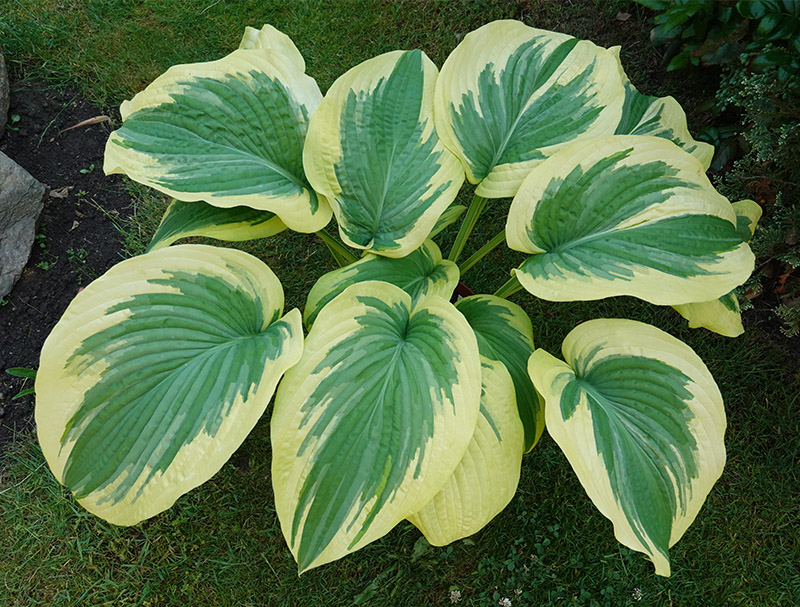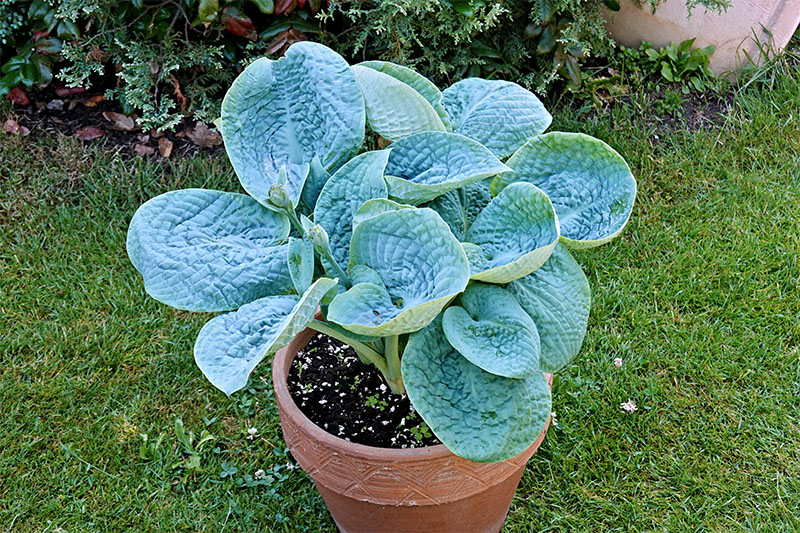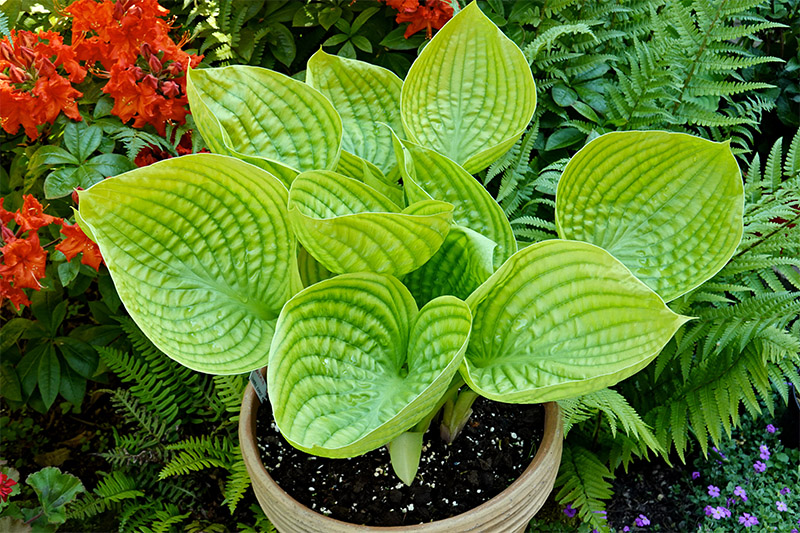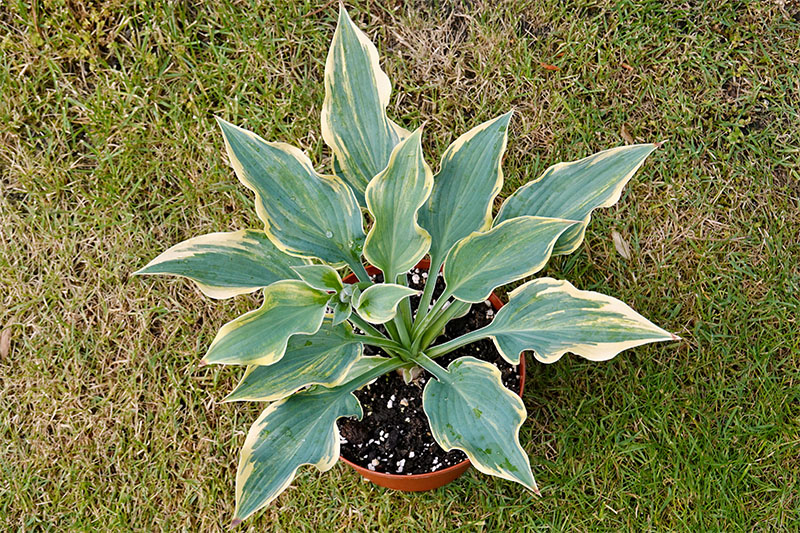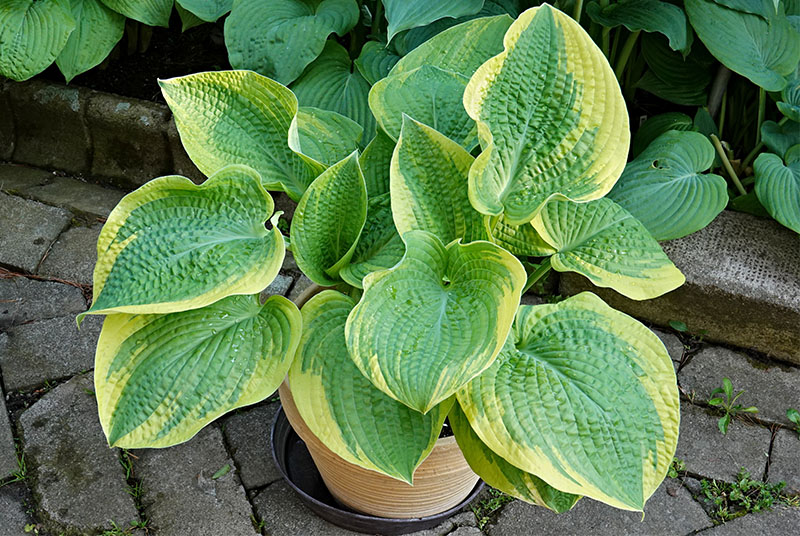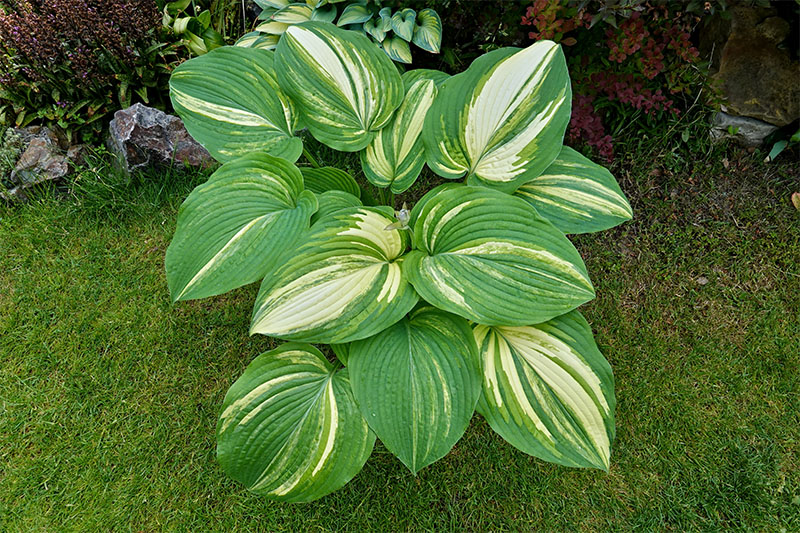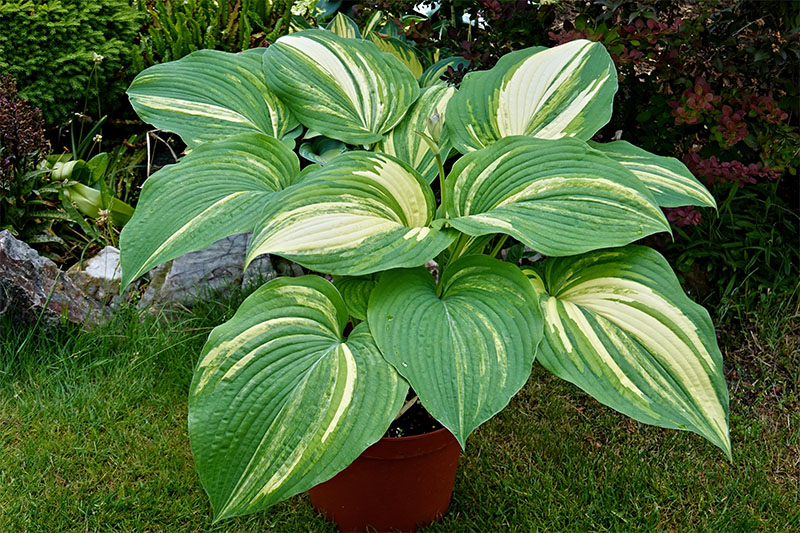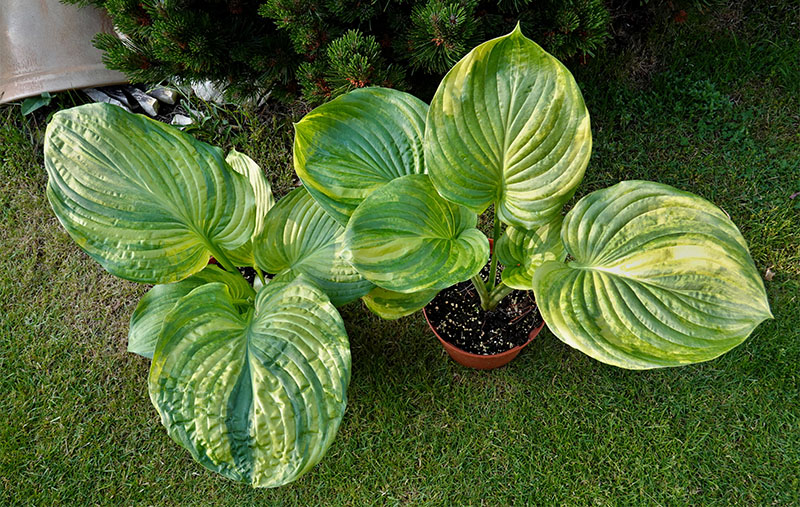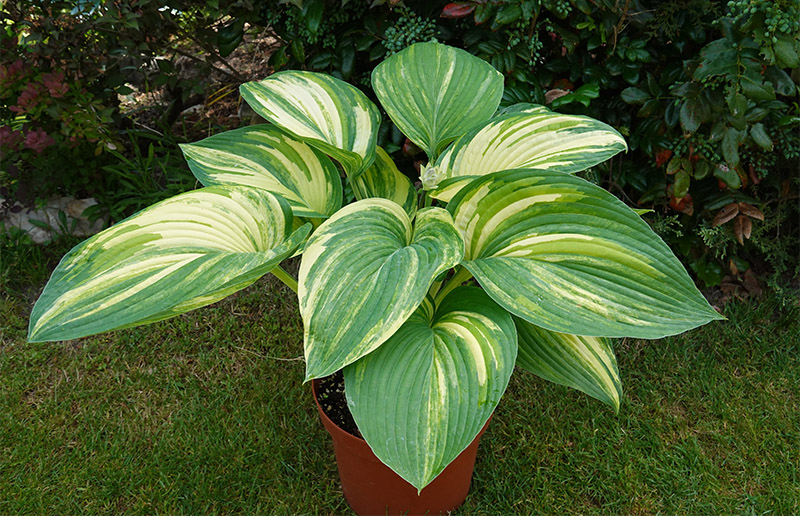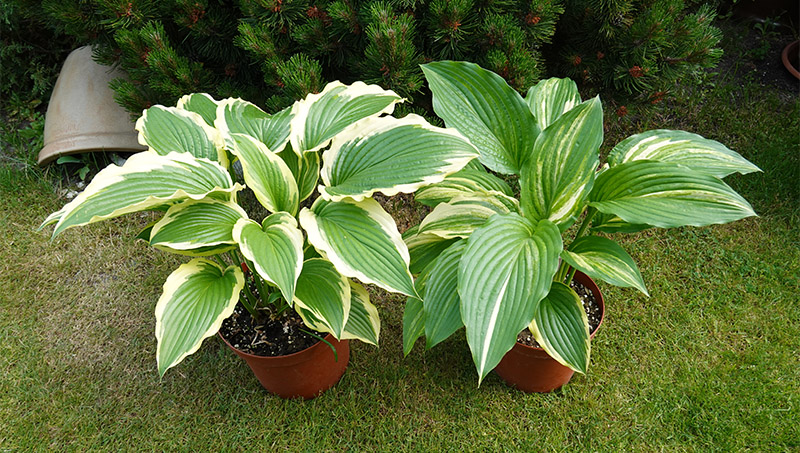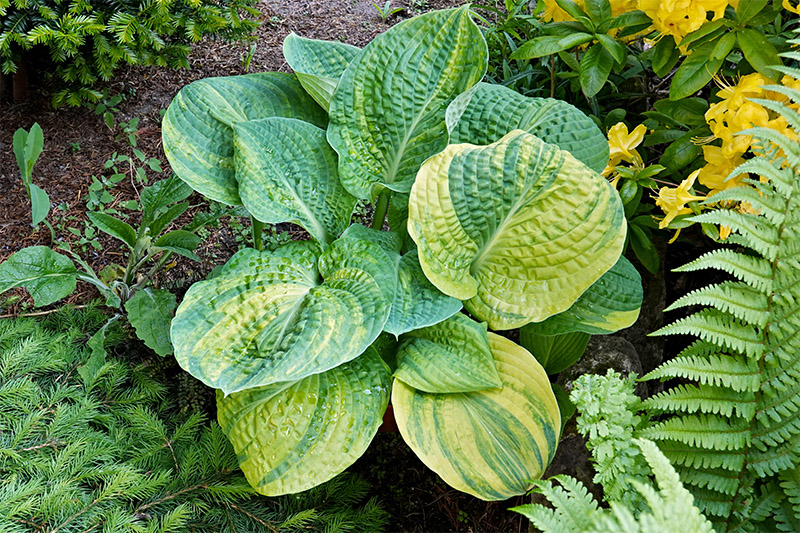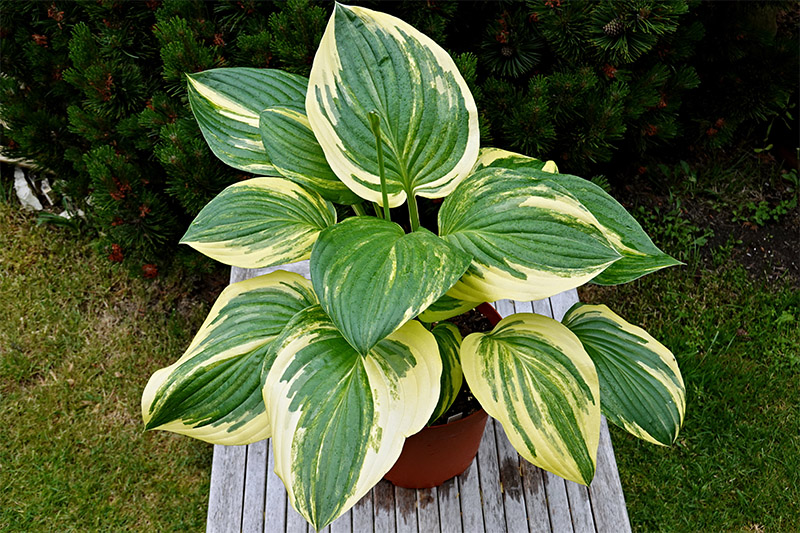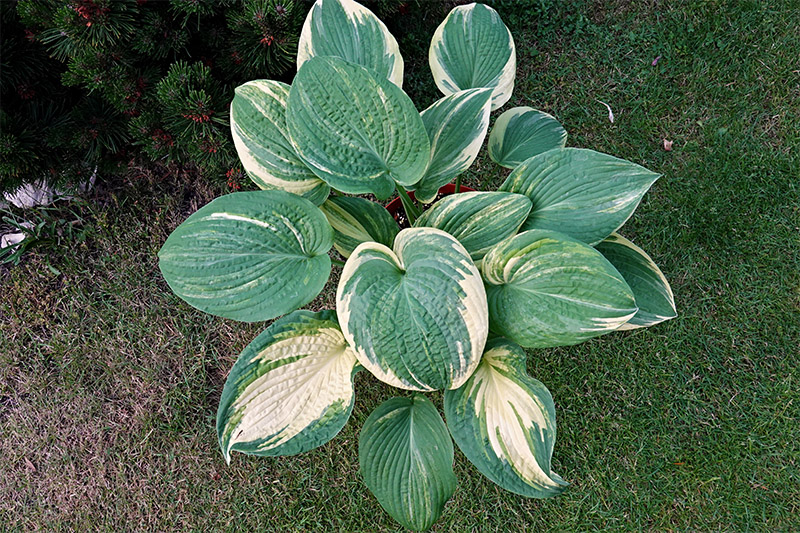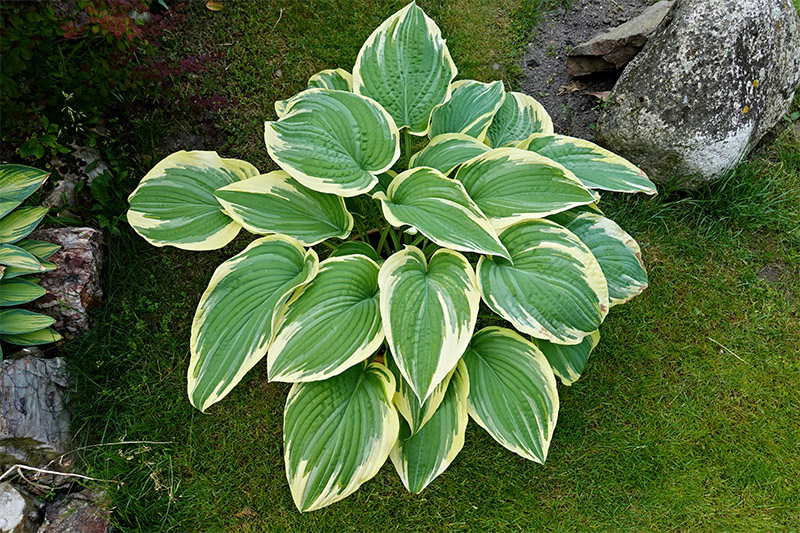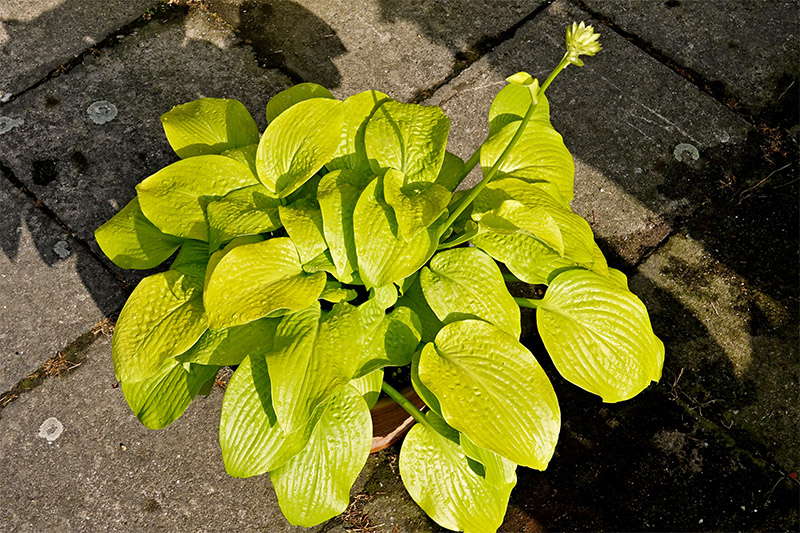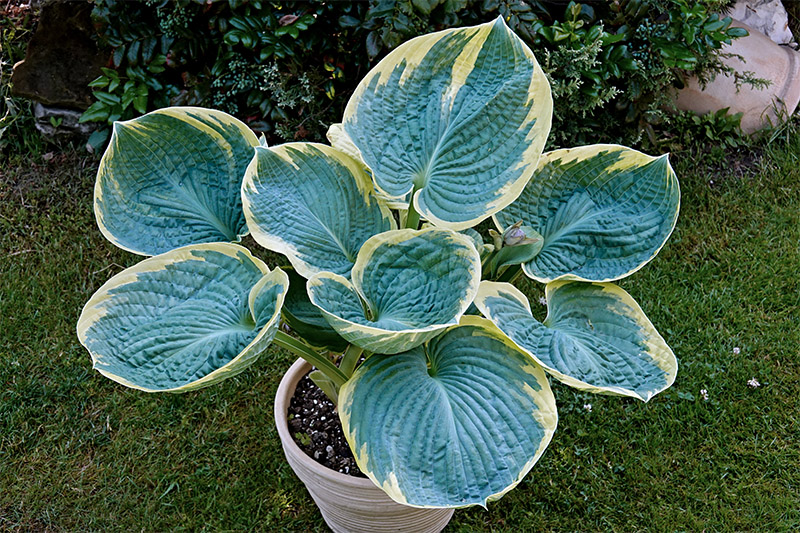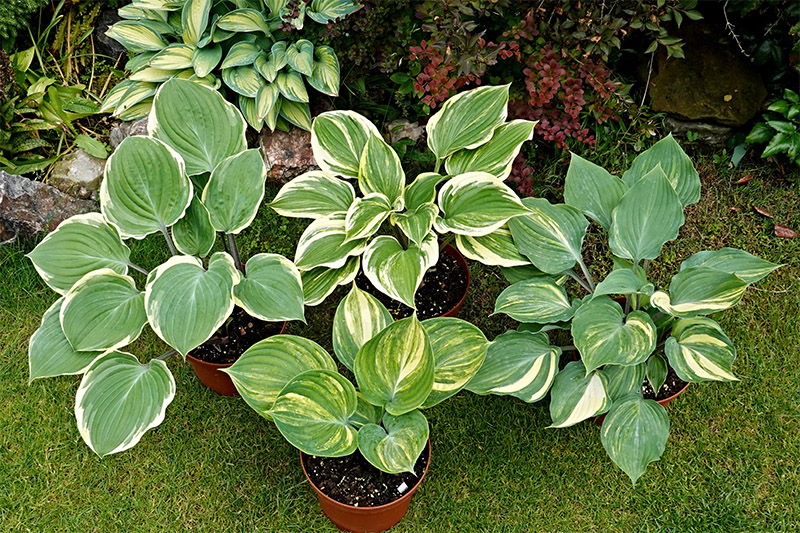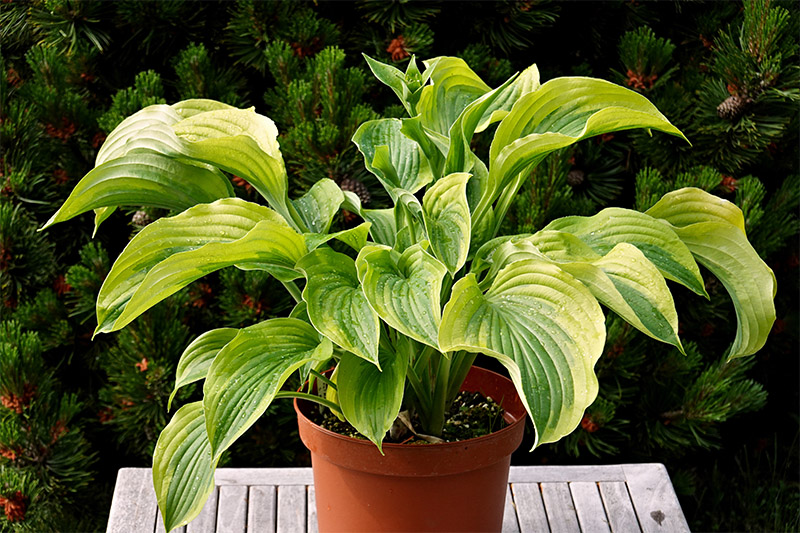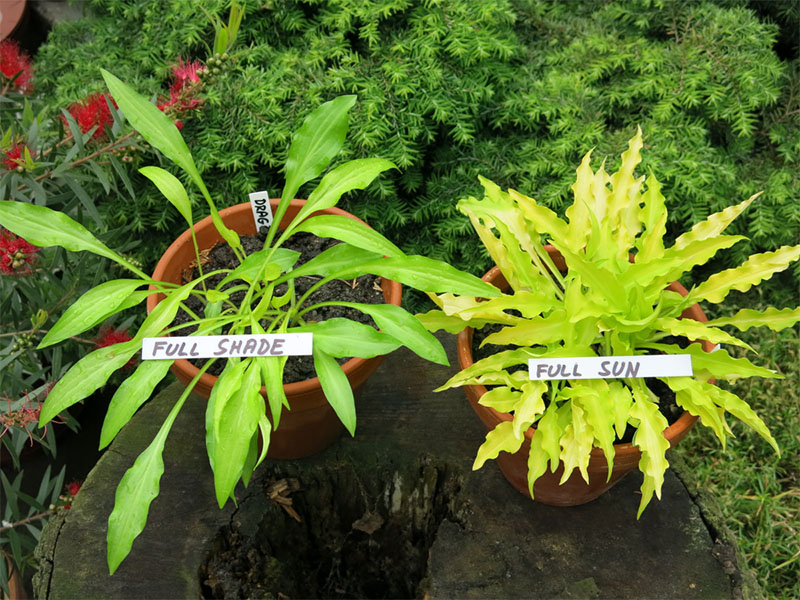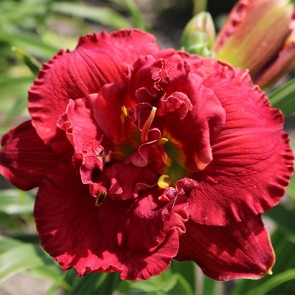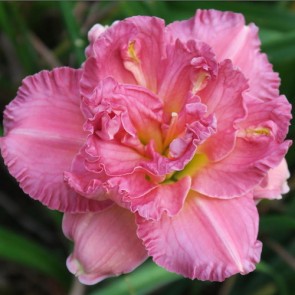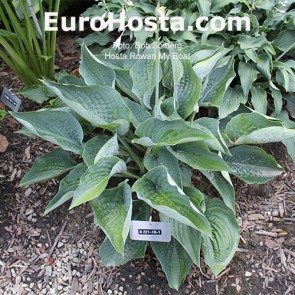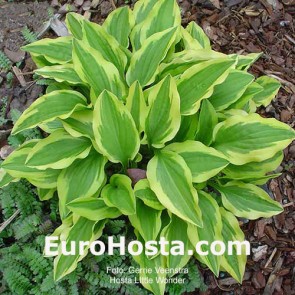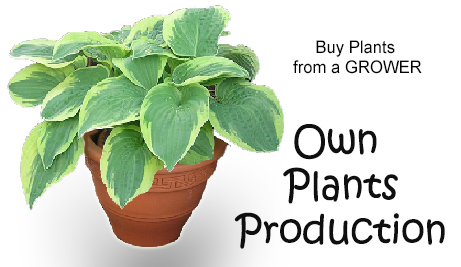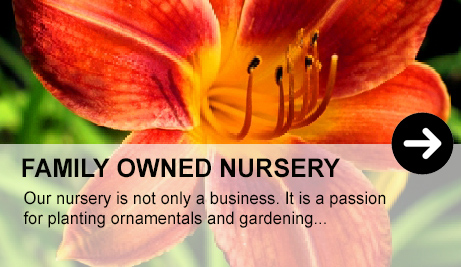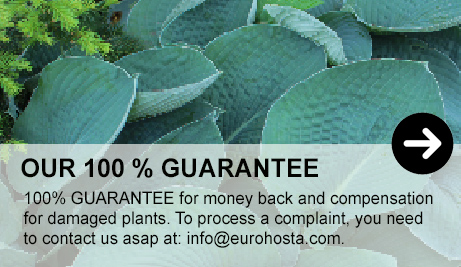Vladimír Mirka and his Bohemia hostas | Text and Photo: Eurohosta + Vladimír Mirka, June 2021
BLOG: All Articles - Eurohosta Blog
|
In this episode of our blog series on gardens in Europe by hosta growers that we want to introduce you, we have visited Czech Republic. We went for not too big, the even cozier gardens of Vladimír Mirka from Kladno; those full with wonderful hostas. I write it in the plural, because Vladimír has two gardens; in one he has hostas almost exclusively in pots, in the second he grows them together with other perennials in the ground. Kladno is a city near Prague that has quite a pleasant weather (450 m above sea level) and hostas are doing well there. Vladimír has about 1300 hosta cultivars in his collection... “I’m an amateur gardener; I don’t have any garden or botanical education.” Vladimír begins to talk. “I ‘only’ have 55 years of experience in growing plants and trees, along a lot of mistakes, but also a few successes.” He says with a smile. Vladimír, when did you start growing hostas? “I started planting hostas intensively about 15–16 years ago, around 2005. It was somehow a continuation of my previous work in the garden – I was growing perennials, orchids, fruits, etc. (some of these activities continue with a limited scope until these days). At that time, I had about five older hosta cultivars. At the beginning, I bought hostas from big sellers and large retailers, supermarkets. Such large companies often offer quite nice selections of hosta cultivars at a low price. Unfortunately, there were a few, however! I don’t like to speak much about that. Easy to say, the quality of plants was a great disappointment. If ordered via the Internet, a large part arrived in poor condition, the cultivars did not fit. More problems than fun. Later on, I started buying hostas from smaller ‘family’ gardens and small retailers in the Netherlands and elsewhere, and there the quality was incomparably better...”
Even though you were not satisfied with the quality of obtained plants at the beginning, you have not lost your love for hostas... “Definitely not, I continued to grow hostas. And today, they are forever occupying my entire garden. I plant the vast majority in pots. This allows me to find the right place in the garden for each hosta cultivar. If one of the positions does not suit, I simply transfer those plants in a flowerpot – more in the sun or, conversely, more in the shade. . . However, growing hostas in flowerpots also has its own shadow side. In the fall, I put all my flowerpots with hostas in a dry, cold cellar, where they overwinter. It’s a really hard work and as the years go by, as feel like this is still increasing...” “Since I like to take photos, it was clear that the object of my interest will also soon become hostas. From the beginning, I documented as well all my experimentations with them. In the past, I successfully offered my hosta photos while interacting with some foreign retailers. . . And afterwards came a period, during which my collection has rapidly growing...”
But you also started to make crosses hostas... “In 2010, I crossed my first five hostas and after the seeds germinated in 2011, the further direction of my hobby for them was clearly defining. One seedling was streaked! This encouraged and inspired me a lot. And so, I started crossing more and more cultivars. It was not easy at that time to obtain information from doing so. I found something on the Internet, but I was the most informed from my own experience.” “A milestone for me was the day I met Milan Zúbrik from Slovakia. It was sometime in 2013. He came to me based on my photos on the Internet. I finally found a partner for discussion, exchange of experiences and cooperation! Suddenly, there was someone discussing with me on how to grow hostas and to cross them. I think that this partnership has been (and still is) mutually much beneficial. Joint discussions about the hostas with Milan have taken both of us to the next level of knowledge. Milan, together with his wife Dana Zúbriková, registered his first hosta in the American Hosta Society (AHS) in 2014. I couldn’t leave this unanswered and decided to do the same for mine. I think it was a good step. Milan and I were the first hosta growers from former post-communist countries, who have done it in the American Hosta Society!” “I currently have around 200–250 own cultivars in the garden, which I have already named, but are still waiting for official registration. So far, I have officially registered only eight cultivars, so I am preparing now to do many more. I always want the registration photos to be as good as possible and fully show the cultivar’s character. That’s why sometimes the process of getting pictures and registration takes me longer time than I expected. . . But for the good result is usually worth the wait.” “All my hosta cultivars have the prefix ‘Bohemia’ because they were grown (crossed) in Central Bohemia (Central Bohemian Region) in the heart of Central Europe. It is important to know where the new cultivar comes from and in what climate condition it grew. It says a lot about it. Not all cultivars from England or the Netherlands are growing well in harder climatic conditions of Central Europe . . . and vice versa.” Which of your cultivars do you value the most? “It is quite a hard question. I don't have a clear answer to it. I like all my hostas. The Bohemia King Charles (big blue), or the Bohemia Atlantis Sunrise (yellow) and the Bohemia Yellow Corvette, which are yellow almost all season. But I also do for those that are green, Bohemia Blues for Greeny, Bohemia Charles Emerald or the fast-growing cultivar with white underside of leaves, which forms a beautiful, regular bunch – Bohemia Quill Bill. For example, I can include as well the non-traditional shape of the Bohemia Tennis Racket cultivar. And, of course, my streaked hostas are worth mentioning, whom I have really many in the garden. For instance, I enjoy seeing Bohemia Shere Khan, Bohemia Fresh Colours, Bohemia Ice Age Queen, Bohemia Vegan Wagyu or Bohemia Baba Yaga. The Bohemia Ripple Blue Effect is growing slowly, but its shape is very unusual and I believe it will be an eye catcher.” “When I return to both my AHS registration and membership, I have to say that it was something like a ‘ticket to the club.’ My acceptance on the American side was very kind. It opened me a way to communicate with other growers and I found a new friend between growers and breeders. I also got several new friends with whom I can now share experiences. I will mention at least Warren I. Pollock (a nomenclature editor of the Hosta Online Journal), who became my mentor and gave encouragement in further attempts. In the garden, I like to check how a particular cultivar behaves under certain conditions. . . Warren I. Pollock was very interested in my experimentations and observations. I provided him with my results, ask for assessment and we have even cooperated on some projects...” Vladimír always tries to do all the things he does, at one hundred percent. In this way, he also approaches his garden, the hosta growing and breeding, the photography, and his other loves for gardening (he still grows – as a hobby – hot peppers and garden orchids) as well. The amazing vitality and perfect appearance of his plants are proof that Vladimír is, despite his modesty, a truly exceptional gardener. We thank him very much for inviting us to his gardens, full of wonderful hostas. We wish him good health for the next years of gardening and also, that his beautiful hosta cultivars will get soon into the gardens all over the world. If you are interested in his cultivars and would you like to see more of them, please go to his website at https://www.bohemiahosta.cz/
Hosta Atlantis and Liberty in pots on the edge of the flower bed. Photo: V. Mirka
Hosta Richmond Blue, seducer of a Christmas tree along with others on the edge of the lawn. Photo: V. Mirka . Vladimír’s garden is full of beautiful specimens. This is Dream Queen hosta. Photo: V. Mirka
Another beautiful specimen in a flowerpot, hosta Frosted Dimples. Photo: V. Mirka
“Friends,” hostas Liberty, Ivory Coast and Majesty cultivars. Photo: V. Mirka
Corner with hostas in the foreground with Kiyosumiensis ‘MAIOHGI. Photo: V. Mirka
Hosta Lakeside Cha Cha in all its beauty. Photo: V. Mirka
Hosta Parky’s Prize planted in soil in a wettest part of the garden. Photo: V. Mirka
Hosta Spring Fling is thriving in a pot. Photo: V. Mirka Many of Vladimír’s own hosta cultivars also grow in the garden –Bohemia Big Bang with white underside of leaves. Photo: V. Mirka
Hosta Bohemia Oh Well. Photo: V. Mirka Still quite a rare combination of colours with green leaves, yellow borders and dark red leaf stalks for hosta Bohemia Sporty Miss Sunshine. Photo: V. Mirka
Hosta Bohemia Yellow Corvette is yellow almost all year round. Photo: V. Mirka
Exotic looking hosta Bohemia Ice Age Queen. Photo: V. Mirka
A very regular bunch of hosta Bohemia Quill Bill. Photo: V. Mirka Hosta Bohemia Ripple Blue Effect. Foto: V. Mirka Hosta Bohemia Vegan Wagyu. Foto: V. Mirka Hosta Bohemia Charles Throne. Foto: V. Mirka
The blue “king” among Vladimír’s plants – hosta Bohemia King Charles. Photo: V. Mirka
Many future new cultivars are growing in the garden ... Bohemia Roquefort, Bohemia Vegan Wagyu and Bohemia Vegan Bacon. Photo: V. Mirka 3 x Ice Age Trail x montana f. macrophylla. Photo: V. Mirka Bohemia Baloo. Photo: V. Mirka Bohemia Bamboo Island. Photo: V. Mirka Bohemia Bamboo Island. Photo: V. Mirka Bohemia Deep Ocean Monster. Photo: V. Mirka Bohemia Blues for Greeny. Photo: V. Mirka Bohemia Controlled Explosion. Photo: V. Mirka Bohemia xy. Photo: V. Mirka Bohemia Flash Gordon. Photo: V. Mirka Bohemia Flash Gordon. Photo: V. Mirka Bohemia Great Fatsby, Bohemia Green Manalishi. Photo: V. Mirka Bohemia High Torque. Photo: V. Mirka Bohemia Romantic Waterfall, Bohemia Wild Waterfall. Photo: V. Mirka Bohemia Puckered Stripes. Photo: V. Mirka Bohemia xx. Photo: V. Mirka Bohemia Snow Storm. Photo: V. Mirka Bohemia Slow Fox. Photo: V. Mirka Bohemia Uncle Ben. Photo: V. Mirka Bohemia Tractor Zetor Seat. Photo: V. Mirka Exotic Treasure x Bohemia King Charles. Photo: V. Mirka Bohemia Swan. Photo: V. Mirka
Vladimír carefully records his experiments with hostas. For example, he observes how light affects the habitus of plants. Photo: V. Mirka © This text and photos are protected by intellectual property rights under the Law no. 618/2003 Coll. (the Copyright Act).. |
||||

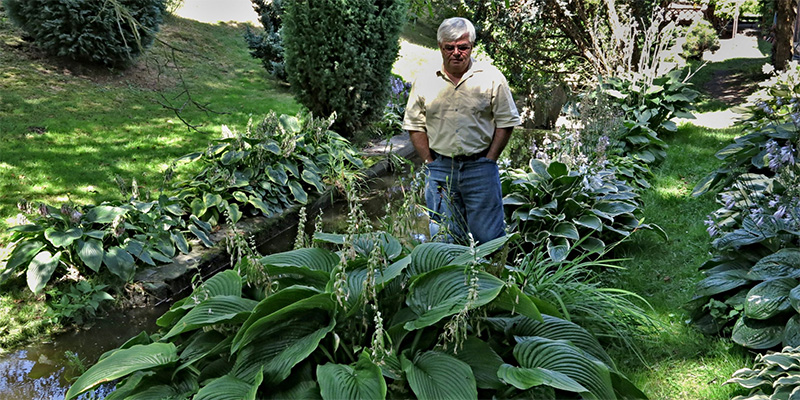
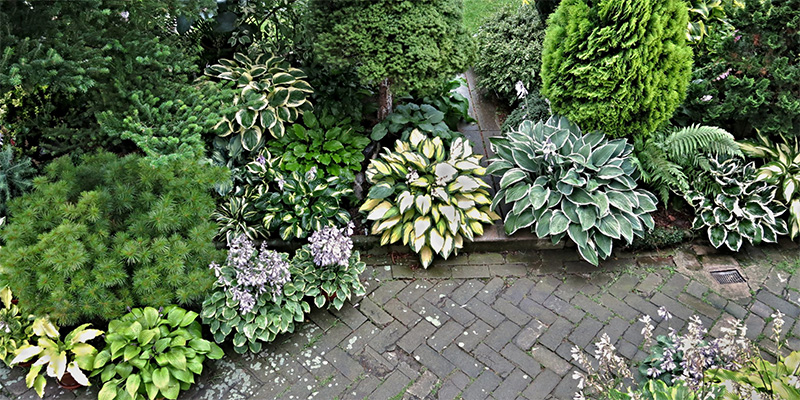
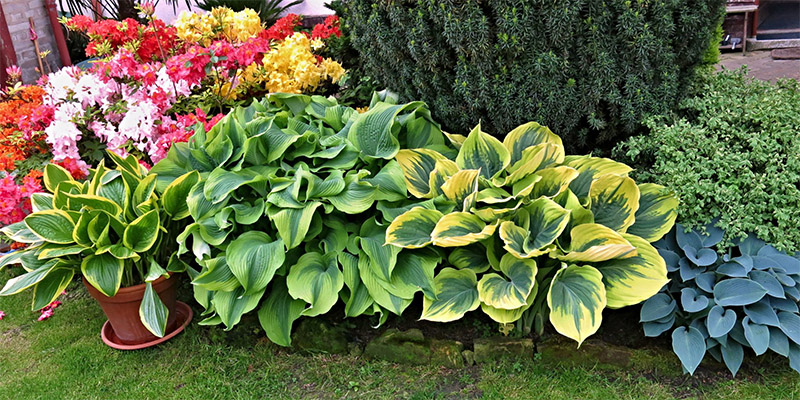
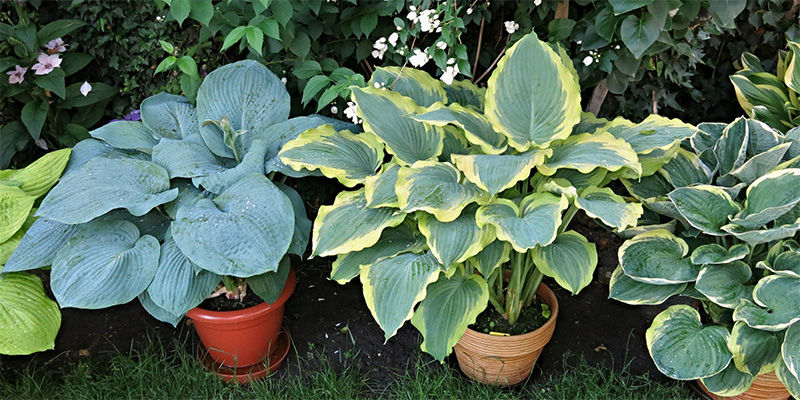 .
.